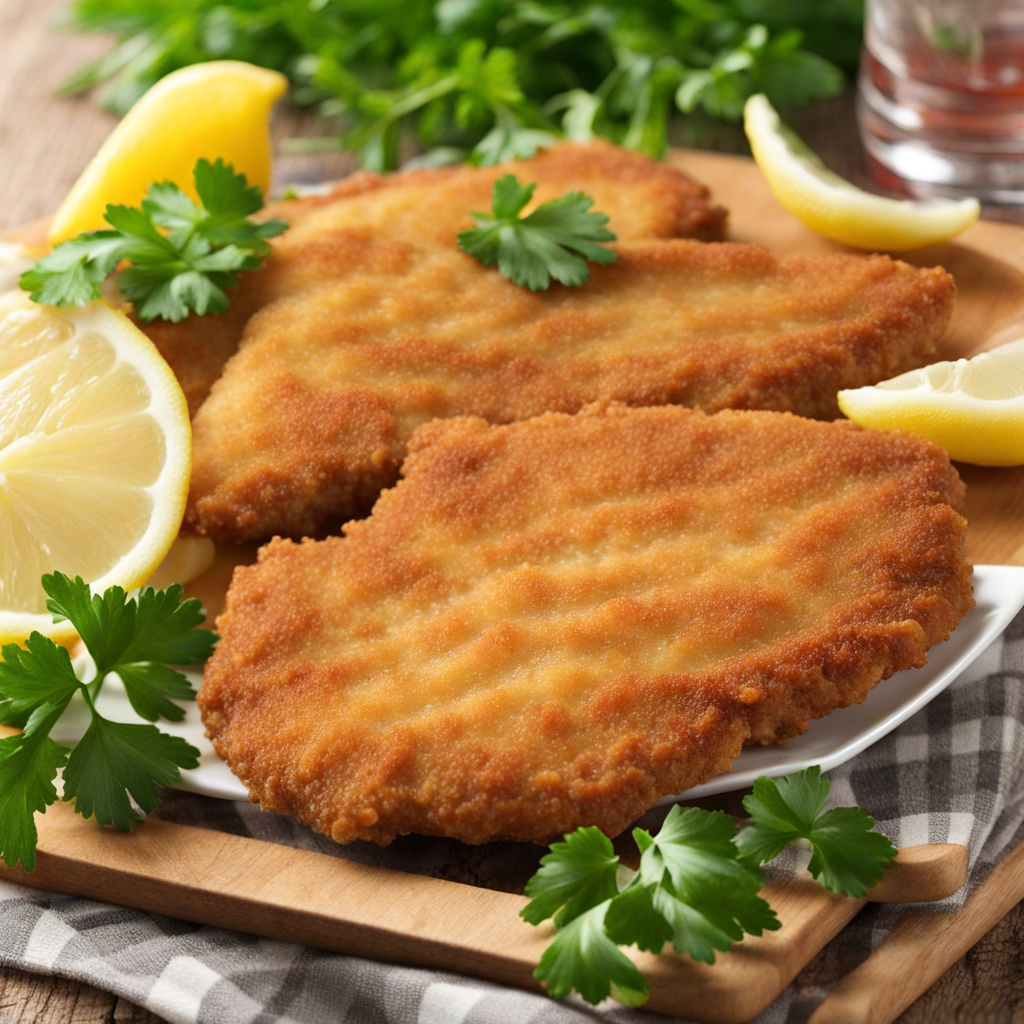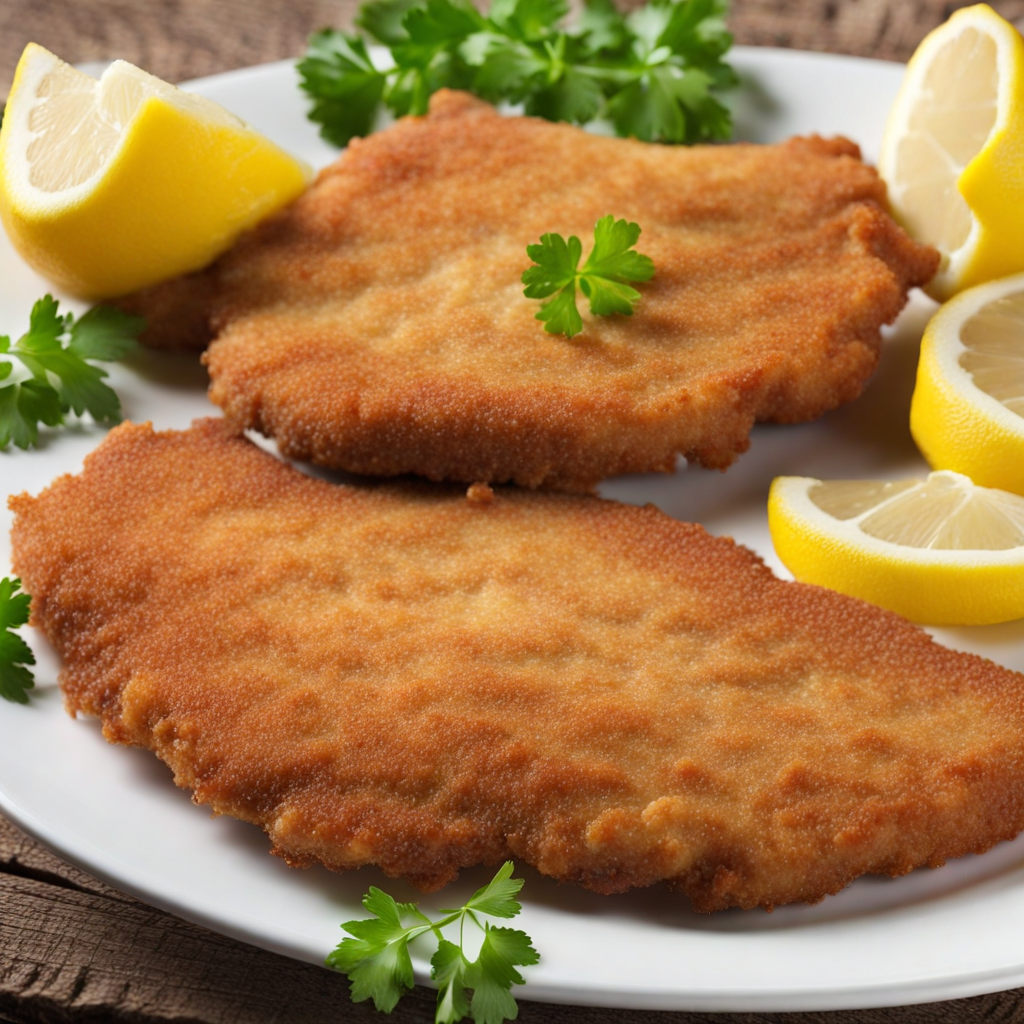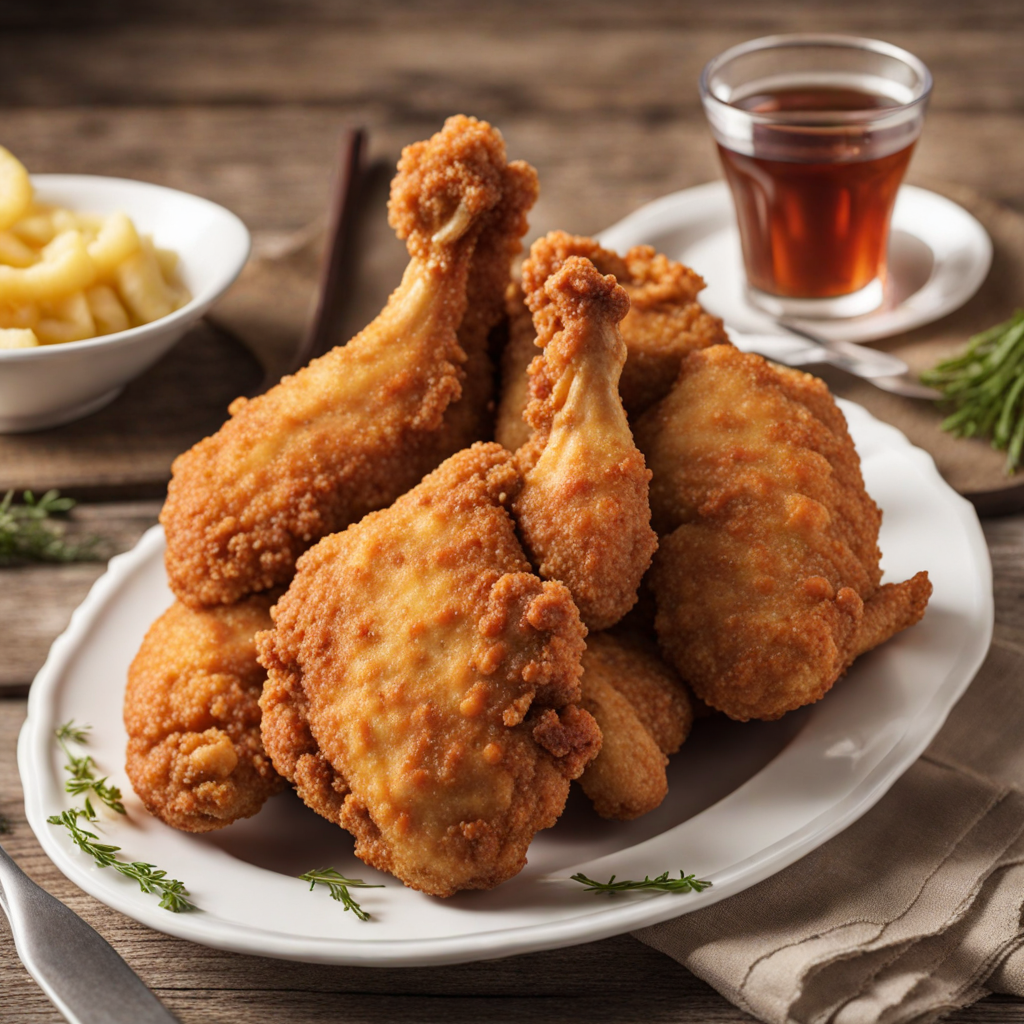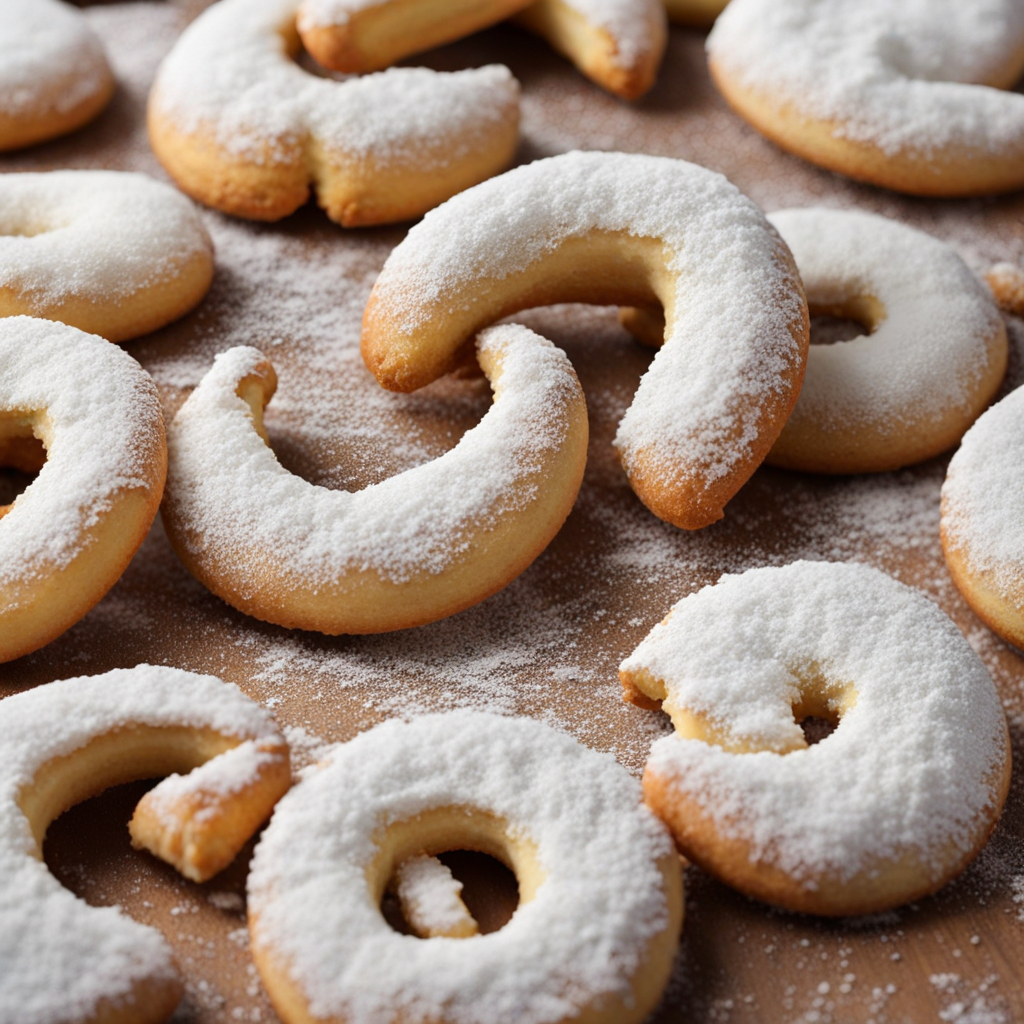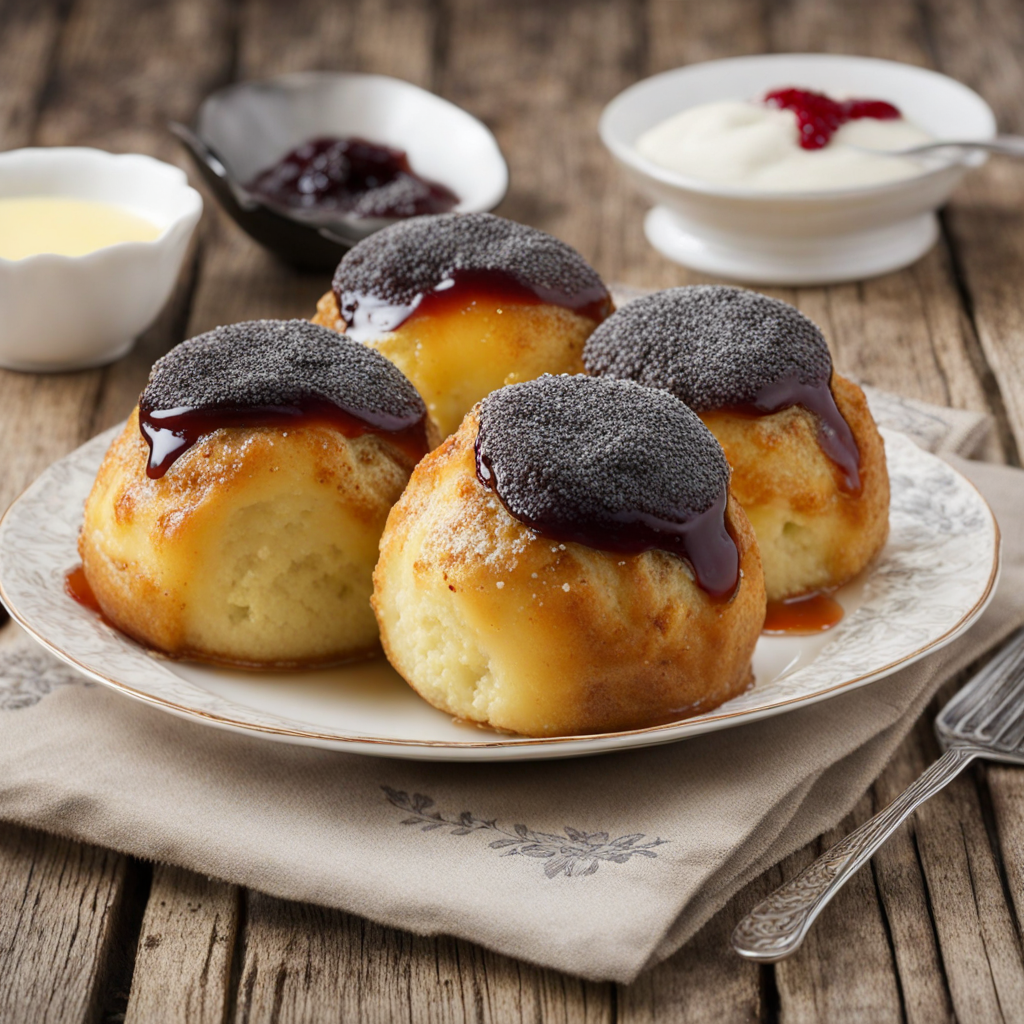Wiener Schnitzel
Wiener Schnitzel is a classic dish hailing from Austria, celebrated for its simplicity and rich flavor. At its core, the dish consists of a thinly pounded piece of veal, which is coated in a light breading made from flour, eggs, and breadcrumbs. The schnitzel is then fried to a golden brown, creating a crispy exterior that perfectly contrasts with the tender and juicy meat inside. Traditionally served with a wedge of lemon, the dish offers a delightful balance of savory and zesty flavors that elevate each bite. Accompanying the Wiener Schnitzel are often traditional sides that enhance the overall experience. Common pairings include creamy potato salad, buttery spaetzle, or a simple cucumber salad dressed in vinegar and oil. These sides not only complement the schnitzel but also introduce additional textures and tastes, making each meal a well-rounded affair. The dish is frequently garnished with fresh parsley, adding a touch of color and freshness to the presentation. While the Wiener Schnitzel is primarily made from veal, variations exist using pork or chicken, catering to different palates. The dish is a staple in Austrian cuisine and is beloved not only for its flavor but also for its cultural significance. Enjoying a Wiener Schnitzel is more than just a meal; it's an experience steeped in tradition, often savored in cozy restaurants or at festive gatherings, making it a must-try for anyone seeking to explore the rich culinary heritage of Austria.
How It Became This Dish
Wiener Schnitzel: A Culinary Journey Through Time The Wiener Schnitzel is not merely a dish; it is a culinary emblem of Austria, steeped in history and cultural significance. This golden-breaded, pan-fried veal cutlet embodies the essence of Austrian cuisine and reflects the broader tapestry of European culinary traditions. Its origins, evolution, and the culinary innovations surrounding it present a fascinating narrative that transcends mere sustenance to embrace identity, tradition, and even national pride. Origins: The Birth of a Culinary Icon The history of Wiener Schnitzel can be traced back to the 13th century, with its roots entwined in the broader category of breaded and fried meats found throughout Europe. Many food historians suggest that the dish may have originated from Italy, specifically the Milanese cotoletta, which is a breaded veal chop. The name “Schnitzel” itself is derived from the German word “Schnitt,” meaning “to cut,” indicating the preparation method involving slicing meat into cutlets. The dish gained prominence in Austria during the 18th century, particularly under the reign of Empress Maria Theresa, who ruled from 1740 to 1780. It is said that her son, Joseph II, was particularly fond of the Milanese-style dish, which led to its adaptation in Austrian kitchens. The first documented mention of Wiener Schnitzel in Austria appeared in 1831, in a recipe book by the renowned Viennese chef Franz Sacher. This acknowledgment helped cement the dish's place in Austrian gastronomy. The Cultural Significance of Wiener Schnitzel Wiener Schnitzel is more than a meal; it is a cultural symbol that reflects the Austrian spirit. In Austria, it is often regarded as the national dish, representing the country's culinary heritage. Eating Wiener Schnitzel is a rite of passage for visitors and a staple in households across the nation. Traditionally served with potato salad, lingonberry sauce, or lemon wedges, the dish offers a harmonious blend of flavors and textures, a celebration of simplicity and quality. The dish is often associated with Vienna, the capital city, where it has become an emblem of Viennese cuisine. The preparation of Wiener Schnitzel is considered an art form, with chefs taking great care to ensure the perfect balance of crispiness and tenderness. The golden crust, achieved by breading with a mixture of flour, eggs, and breadcrumbs, is a source of pride for many cooks and a topic of friendly debate among culinary enthusiasts regarding the best techniques and ingredients. Moreover, Wiener Schnitzel plays a significant role in social gatherings and celebrations. It is a common feature in family meals and festive occasions, reflecting the warmth and hospitality of Austrian culture. The dish also made its way into the global culinary landscape, becoming synonymous with Austrian dining and often featured in international menus, contributing to the country’s soft power through its gastronomy. Evolution and Variations Over Time As with many traditional dishes, Wiener Schnitzel has undergone various adaptations and transformations throughout its history. While the classic version is made from veal, the dish can also be prepared using pork or chicken, catering to different tastes and dietary preferences. The introduction of pork schnitzel, in particular, has gained popularity, especially in regions where veal is less accessible or more expensive. In contemporary Austrian cuisine, Wiener Schnitzel is often accompanied by a range of side dishes. While the traditional pairing with potato salad remains popular, modern interpretations may include variations such as cucumber salad, French fries, or even a fresh garden salad. The versatility of the dish allows for creativity while still respecting its roots. Outside Austria, the dish has inspired numerous adaptations around the world. In Germany, for instance, the “Schnitzel” has become a ubiquitous menu item, often enjoyed with a variety of sauces and sides. The dish has also found its way into American cuisine, where it is sometimes served as a sandwich or as a topping for salads, showcasing the adaptability of this classic preparation. Wiener Schnitzel in Popular Culture The allure of Wiener Schnitzel extends beyond the dinner table; it has made its mark in popular culture as well. The dish has been featured in numerous films, television shows, and literature, highlighting its significance in Austrian identity. It is often portrayed as a quintessentially Austrian experience, with the act of enjoying a Wiener Schnitzel in a traditional Viennese tavern serving as a cultural touchstone for both locals and tourists alike. The dish also enjoys a playful presence in Austrian humor and folklore. Austrian comedians and entertainers often reference Wiener Schnitzel in their routines, celebrating its status as a national treasure. Festivals and events dedicated to this beloved dish further reinforce its cultural significance, with cooking competitions and tastings showcasing the best variations and techniques. Conclusion: The Enduring Legacy of Wiener Schnitzel As we savor the crispy, tender layers of Wiener Schnitzel, we are not just indulging in a meal but partaking in a rich history that spans centuries. From its uncertain origins in the kitchens of Italy to its establishment as a cherished symbol of Austrian culture, Wiener Schnitzel embodies the story of a nation’s culinary evolution. Its cultural significance, adaptability, and presence in popular culture reflect the deep connections between food, identity, and community. In each bite of Wiener Schnitzel, we taste the echoes of history, the passion of cooks, and the warmth of shared meals. This dish has transcended its humble beginnings to become a beloved staple, a culinary icon that will continue to resonate with generations to come. Whether enjoyed in a cozy Viennese restaurant or prepared at home, Wiener Schnitzel remains a delicious testament to Austria’s rich gastronomic legacy.
You may like
Discover local flavors from Austria


